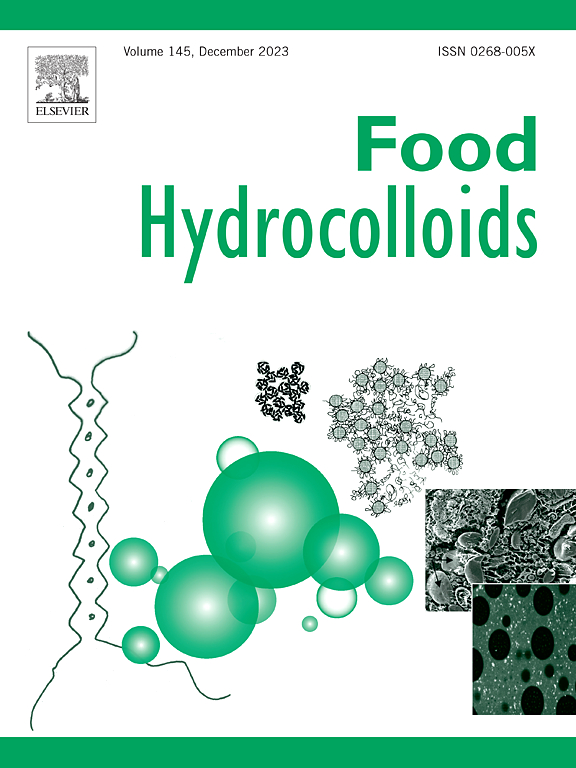Microcapsules with amazonian buriti fruit oil (Mauritia flexuosa L.) on maintaining oxidative stability of ground beef
IF 11
1区 农林科学
Q1 CHEMISTRY, APPLIED
引用次数: 0
Abstract
The addition of bioactive compounds is essential for enhancing the flavor and extending the shelf life of meat products. Buriti oil (Mauritia flexuosa L.), rich in phenolic compounds, carotenoids, and fatty acids, is a promising alternative, and encapsulation has proven effective in preserving these compounds during processing. This study aimed to develop microcapsules of Buriti oil (MOB) using the spray drying technique and evaluated their morphology, encapsulation efficiency, physical and thermal properties, total phenolics, fatty acid profile, and carotenoid content. Additionally, different concentrations of microcapsules (0.40%, 0.60%, 0.75% w/w) were applied as an antioxidant vehicle in ground burgers stored for 12 days at 4 °C. The shelf life analyses included water activity, pH, cooking loss, lipid oxidation, and color parameters. The microcapsules of Buriti oil were successfully developed, showing good morphology, with a drying yield of 24.41%, a total phenolic concentration of 351.11 mg GAE/100 g−1, carotenoids encapsulation efficiency of 80.07%, vitamin A concentration of 34.38 μg EAR−1, and a predominance of 70.5% oleic acid. Fourier-transform infrared spectroscopy (FTIR) confirmed the presence of fatty acids. The microcapsules exhibited good thermal stability and effective antioxidant activity at a concentration of 0.40% w/w. The microcapsules of Buriti oil from the Amazonian fruit (Mauritia flexuosa L.) emerge as a promising source of bioactive compounds such as total phenolic, carotenoids, and fatty acids, acting as a potential effective antioxidant for the preservation of ground burgers.

求助全文
约1分钟内获得全文
求助全文
来源期刊

Food Hydrocolloids
工程技术-食品科技
CiteScore
19.90
自引率
14.00%
发文量
871
审稿时长
37 days
期刊介绍:
Food Hydrocolloids publishes original and innovative research focused on the characterization, functional properties, and applications of hydrocolloid materials used in food products. These hydrocolloids, defined as polysaccharides and proteins of commercial importance, are added to control aspects such as texture, stability, rheology, and sensory properties. The research's primary emphasis should be on the hydrocolloids themselves, with thorough descriptions of their source, nature, and physicochemical characteristics. Manuscripts are expected to clearly outline specific aims and objectives, include a fundamental discussion of research findings at the molecular level, and address the significance of the results. Studies on hydrocolloids in complex formulations should concentrate on their overall properties and mechanisms of action, while simple formulation development studies may not be considered for publication.
The main areas of interest are:
-Chemical and physicochemical characterisation
Thermal properties including glass transitions and conformational changes-
Rheological properties including viscosity, viscoelastic properties and gelation behaviour-
The influence on organoleptic properties-
Interfacial properties including stabilisation of dispersions, emulsions and foams-
Film forming properties with application to edible films and active packaging-
Encapsulation and controlled release of active compounds-
The influence on health including their role as dietary fibre-
Manipulation of hydrocolloid structure and functionality through chemical, biochemical and physical processes-
New hydrocolloids and hydrocolloid sources of commercial potential.
The Journal also publishes Review articles that provide an overview of the latest developments in topics of specific interest to researchers in this field of activity.
 求助内容:
求助内容: 应助结果提醒方式:
应助结果提醒方式:


